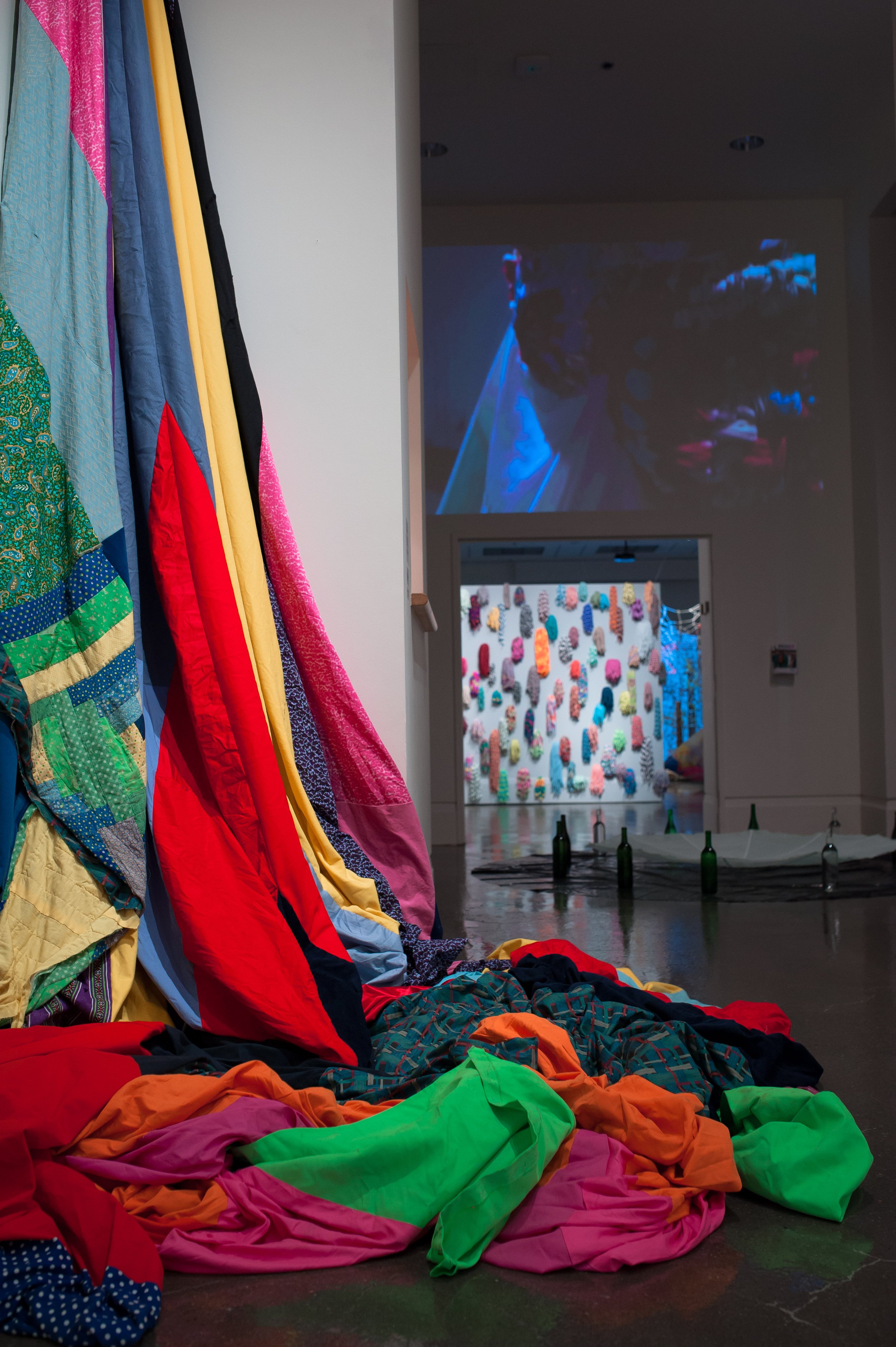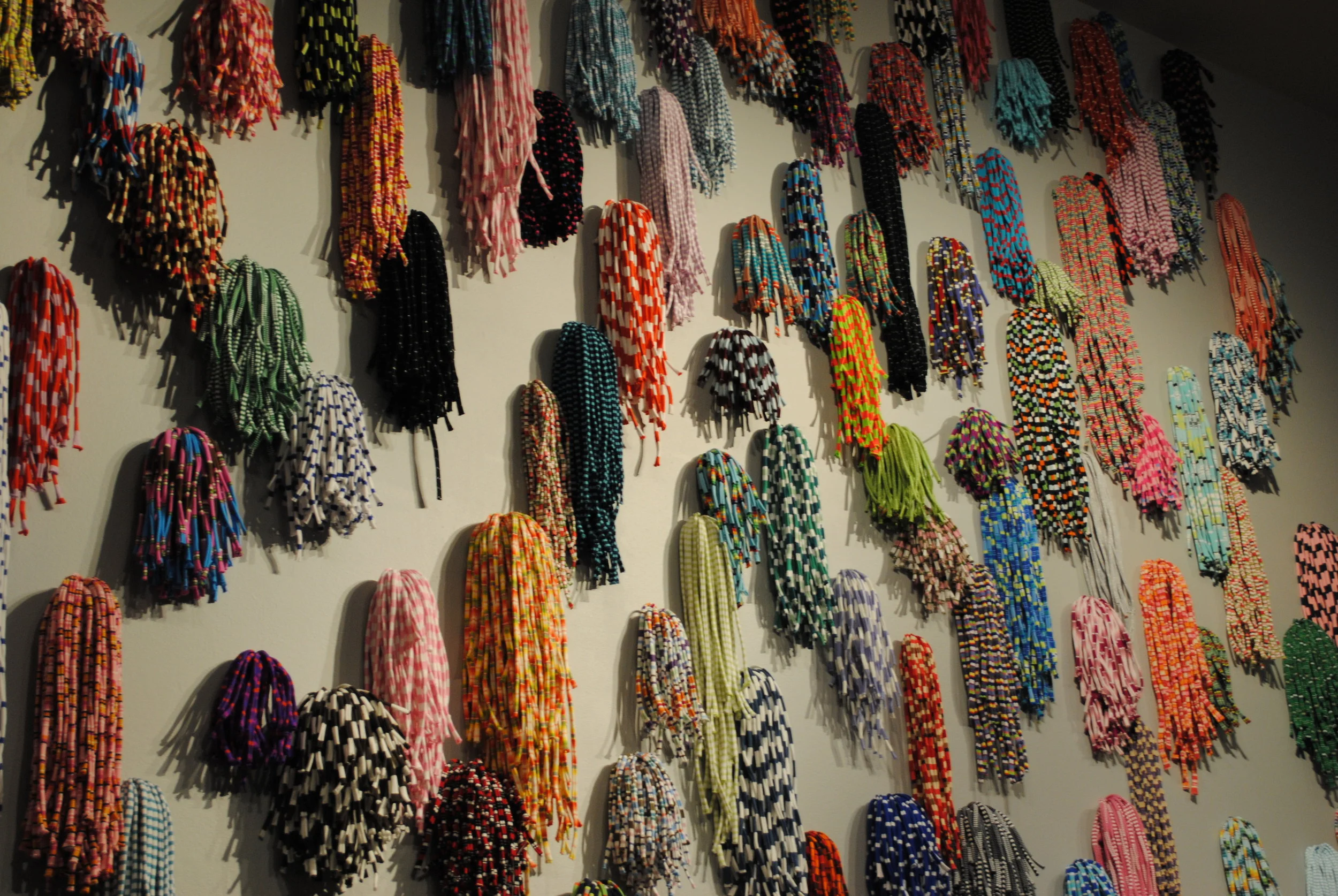



























Highlights from my time as an exhibition designer and art installer in cultural spaces, galleries, and museums throughout my career. Personal main take-aways from this part of my career were composition, how people experience a physical space, and collaborating with artists and art industry thought leaders.

This piece was entirely reliant on projector tech, shadows, and reflections involving illusory methods. Staging the equipment to deliver a fully immersive encounter for the patron would prove to be a challenge for the spaces where people weren’t looking.
More on Mary Ma.

This space was almost a solo install—save the people-power needed to carry and lift the larger elements. Of note, the wallpaper-wall was extremely hard to align and, I was working with very large paper, lots of room to go wrong. To install the congregation of porcelain doves I sat at floor level very cautiously as they circled me for a nearly a week (very intimidating!). My main concern was to make sure they could not be budged by visitors. More on the artist at sanazmazinani.com.

In this beast of an install curated by Stuart Keeler, my focuses were addressing the physical limitations and the productions of the incense wall for What It Is I Came For I Turn and Turn, Part VI by Kai Chen featuring thousands of drilled holes, and Franco Arcieri’s Astral Noise performance. Read more about the turn out at Toronto.com.

One of the very first installs I participated in where the challenge was in that the articles used were delicate and antiquated materials such as salt and rusted metal. The work spoke for itself as the spaces quietly gave way to the powerful work. More at www.noellehamlyn.com.

The impact of colour, lighting, and spacial relationships were my main take-aways on this exhibit. First time working with large amounts of dirt and gold leaf, very volatile materials. Visual spacing was important in this show where I learned how to pace and space focal points to maintain visual interest, a skill I use now as a creative and designer in my practice every day. More at sumairatazeen.com.

How do you organize chaos? Libby Hague’s life work was a force of volume for this show, and my small team and I worked closely with the artist who gave us the liberty to guide her materials to create a visual kaleidoscope experience. Composition and contrast by creating pulse checks or breaks helped to create a visual flow as one walked through the spaces occupied by endless visual stimulation. More at www.libbyhague.com.